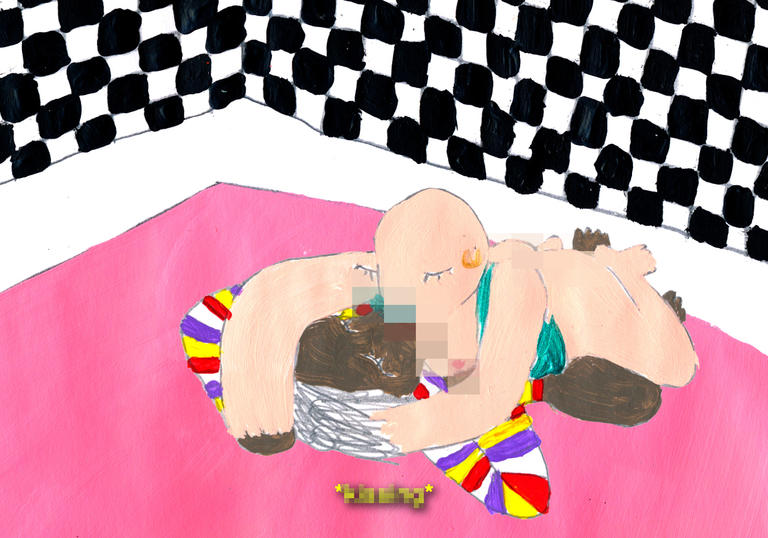Throughout 2018, we’re working with The Smalls to present twelve new short films directed by emerging filmmakers in response to the themes explored by The Art of Change. From documentary and animation to spoken word and performance, the series will demonstrate a diversity of perspectives on social change and we’ll be sharing a new film on the first Friday of every month.
We caught up with our first director, Amanda Eliasson, to find out more about her work, and what art and change means to her.
How would you describe your style?
I’ve always had a love for painting, but never set out for it to be a career. I was going to study to be an air traffic controller but secretly applied to a foundation year at Beckmans College of Design, Stockholm, and got accepted. At Beckmans I discovered animation and realised it was much more interesting for me to be able to make my illustrations and paintings move. Since then I’ve developed a deep interest in making flat images transport the viewer into a three dimensional space.
I would say my style is playful and naive in contrast to the difficult social subjects I often address in my films.
How does your film respond to this month’s theme – Censorship?
Censorship is a difficult subject because on one hand it’s put in place to protect vulnerable people, and on the other hand it’s restricting the spirit of free expression. My biggest concern about censorship, as an artist, is the governmental violation of the free speech. I got the idea of this film, Square Face, when a social media post I made; searching for a ‘riot grrrl’ band, was taken down. The takedown was just absurd to me and I wanted to play on that absurdness in my film and censor everyday-words to make it impossible for the main characters to communicate.
Can you explain the process behind the making of your film?
My animation process is always very slow and messy as I’m painting every frame by hand, but the craft is also why I love what I do. I start off by making a few style frames as I’m writing the story, to me it’s very important to make a visualisation of the final outcome as I’m writing to get motivated. When that’s done I move on to pencil animation to make sure the movements work before I paint it all in acrylic paint. When all paperwork is done there’s just scanning and post production left.
Filmmaking is a great tool to make people feel and then hopefully act on that feeling to engage or change
Do you think art really can be a vehicle for change?
With everything that’s going on today, I think it’s easy to feel disconnected to the problems of other people. We don’t want to be preached at. We want to feel in control of our own decisions. This is where I believe art, and in my case filmmaking, is a great tool to make people feel and then hopefully act on that feeling to engage or change.
About Amanda Eliasson
Amanda Eliasson is a Swedish animation director who recently graduated with an MA in animation from the Royal College of Art, London. She now works as a freelance animation director. artofam.se
Next month, our theme is ‘DIY Art‘.
Subscribe to the Barbican YouTube channel to see more short films throughout The Art of Change.

